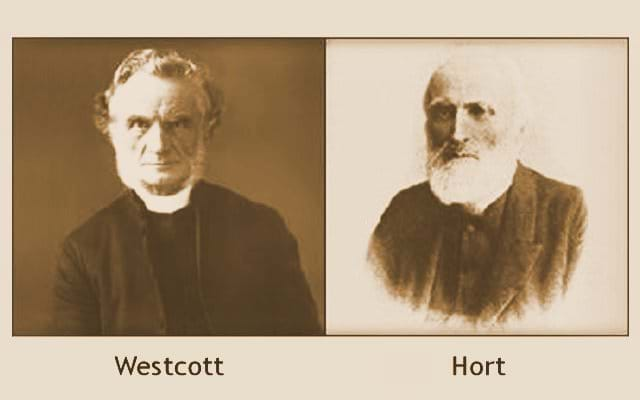
The Westcott and Hort Only Controversy
By: Dr. Phil Stringer
The Westcott and Hort Theory
In the 1870's, a challenge arose in the English world to the primacy of the King James Bible. There had always been a challenge from Roman Catholicism, but this challenge came from men who were officially Protestants: Church of England Bishop Brooke Foss Westcott and Cambridge University Professor Fenton John Anthony Hort.
The heart of the Wescott and Hort theory was that the New Testament was preserved in almost perfect condition in two Greek texts, the Vaticanus and the Sinaticus. Sinaticus was discovered in a wastebasket in St. Catherine’s Momentary (near Mt. Sinai) in 1844 by Constantin von Tischendorf. The Vaticanus was found in the Vatican library in 1475 and was rediscovered in 1845.
The King James New Testament was translated from a different family of Greek texts. To Westcott and Hort, the King James Bible was clearly an inferior translation. It must be replaced by a new translation from texts that they considered to be older and better. They believed that the true work of God in English had been held back by an inferior Bible. They determined to replace the King James Bible and the Greek Textus Receptus. In short, their theory suggests that for fifteen hundred years the preserved Word of God was lost until it was recovered in the nineteenth century in a trash can and in the Vatican Library.
Hort clearly had a bias against the Textus Receptus, calling it "villainous" and "vile". Hort aggressively taught that the School at Antioch (associated with Lucian) had loosely translated the true text of Scripture in the second century A. D. This supposedly created an unreliable text of Scripture which became the Textus Receptus. This was called the Lucian Recension Theory.
Hort did not have a single historical reference to support the idea that such a recension took place. He simply theorized that it must have taken place. In spite of the fact that there is not a single historical reference to the Lucian Recension, many Bible colleges teach it as a historical fact.
Westcott and Hort Only!
It is clear that the modern movement to revise the English Bible is based completely on the works of Westcott and Hort.
K.W. Clark writes, "...the Westcott-Hort text has become today our Textus-Receptus. We have been freed from the one only to become captivated by the other...The psychological chains so recently broken from our fathers have again been forged upon us, even more strongly."
E.C. Colwell writes, "The dead hand of Fenton John Anthony Hort lies heavy upon us. In the early years of this century Kirsopp Lake described Hort’s work as a failure, ...But Hort did not fail to reach his major goal. He dethroned the Textus Receptus. ...This was a sensational achievement, an impressive success. Hort’s success in this task and the cogency of his tightly reasoned theory shaped - and still shapes - the thinking of those who approach the textual criticism of the New Testament through the English language."
Zane Hodges, a long time professor at Dallas Theological Seminary, writes, "Modern textual criticism is psychologically addicted to Westcott and Hort. Westcott and Hort in turn, were rationalists in their approach to the textual problem in the New Testament and employed techniques within which rationalism and every other kind of bias are free to operate."
Alfred Martin, former Vice-President at Moody Bible Institute, wrote in 1951, "The present generation of Bible students having been reared on Westcott and Hort have for the most part accepted this theory without independent or critical examination. ...if believing Bible students had the evidence of both sides put before them instead of one side only, there would not be so much blind following of Westcott and Hort."The two most popular Greek manuscripts today, Nestles-Aland and UBS (United Bible Society), differ very little from the Westcott and Hort text.
What You Have to Believe to Accept the Westcott and Hort Theory
- You have to believe that people who believed in the Deity of Christ often corrupt Bible manuscripts.
- You have to believe that people who deny the Deity of Christ never corrupt Bible manuscripts.
- You have to believe that people who died to get the gospel to the world couldn’t be trusted with the Bible.
- You have to believe that their killers could be trusted.
- You have to believe that the Celtic Christians, Waldenses, Albigenses, Henricians, Petrobrussians, Paulicians, the Greek Orthodox Church, the Protestant churches, the Anabaptists and the Baptists all did not have the pure word of God.
- You have to believe that the Roman Catholics and the nineteenth century rationalists did have the pure word of God.